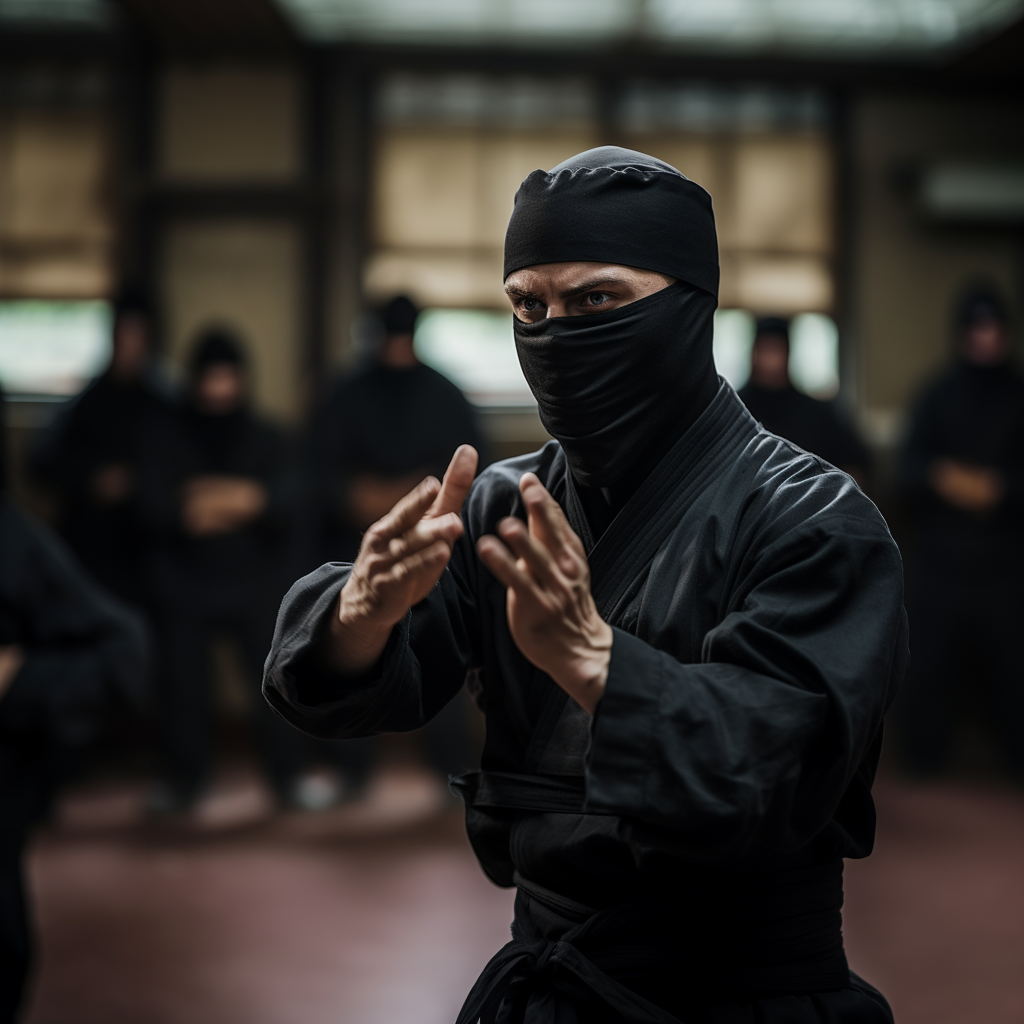The art of Ninjutsu, a traditional Japanese martial art, is shrouded in a veil of mystery and intrigue. Indeed, it fuels the collective imagination with popular representations of stealthy and skillful warriors. This article explores the history, techniques, philosophy and heritage of Ninjutsu in detail. It offers an in-depth look at this iconic martial art.
Origins and History of the art of Ninjutsu
Ninjutsu has its roots in medieval Japan. Indeed, it emerged during the Sengoku period (1467-1603), an era of civil wars and conflicts. The earliest practitioners are known as “ninja” or “shinobi”. They are agents specializing in espionage, guerrilla warfare and sabotage techniques. They often belonged to specific clans and trained secretly.
Techniques and Fundamental Principles
Ninjutsu encompasses a wide range of techniques, from silent infiltration to mastery of traditional weapons such as the katana, shuriken, and kunai. Ninjas were also experts in camouflage, disguise and survival techniques in hostile environments. The fundamental principles of Ninjutsu include stealth, flexibility, adaptability, and self-control.
The Nine Traditional Schools
Ninjutsu includes nine traditional schools, each specializing in specific aspects of the art. These include Togakure-ryū, Gyokko-ryū, and Kukishin-ryū, each bringing its own unique perspective on combat techniques, strategy, and philosophy.
The Spiritual Aspect
Beyond physical skills, Ninjutsu incorporates an important spiritual aspect. Ninjas train in meditation, understanding natural elements and managing ki (internal energy). Connection with nature and self-understanding were considered crucial to the ninja’s effectiveness.
The Contemporary Heritage of the art of Ninjutsu
Although the times of feudal warfare are long gone, Ninjutsu continues to exist in different forms in the modern world. Indeed, contemporary schools teach this ancestral art. Now, they emphasize preserving traditional techniques while adapting them to the needs of today’s society.
Mediatization and Myths
Ninjutsu has gained worldwide popularity through popular culture. Particularly through films, television series and novels. However, it is important to separate fact from fiction, as many myths and exaggerations still surround this martial art.
Ninjutsu, much more than a simple set of martial skills, is a complex art. It is steeped in history, philosophy and mysticism. While the image of the ninja remains anchored in the popular imagination, exploring the authentic roots of Ninjutsu reveals a rich and fascinating heritage that transcends eras. Thus, this martial art continues to captivate and inspire, offering a unique insight into the secret and enigmatic world of Japanese shinobi.



